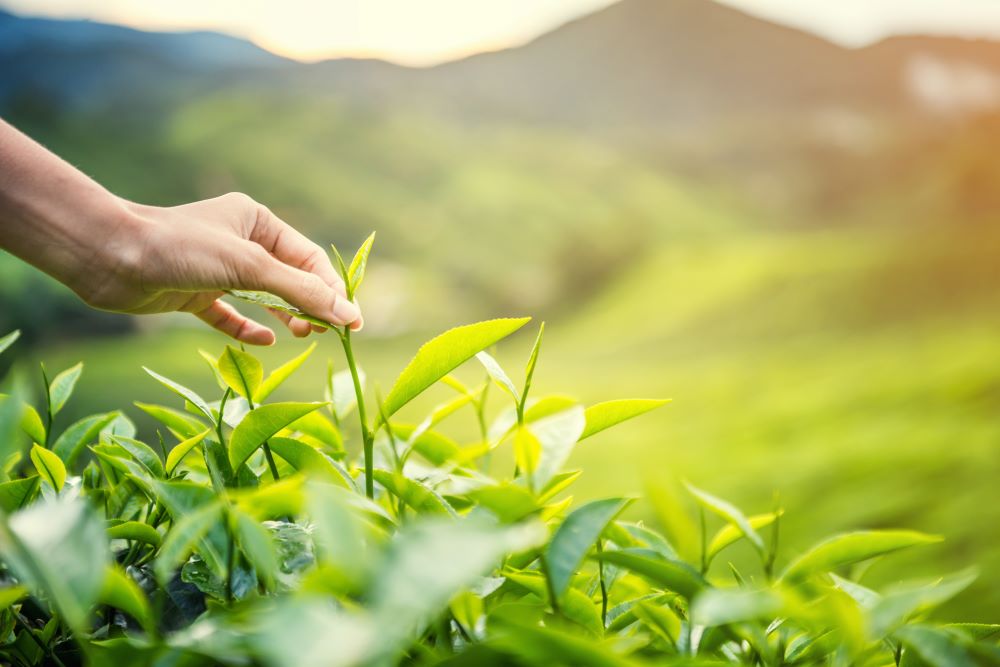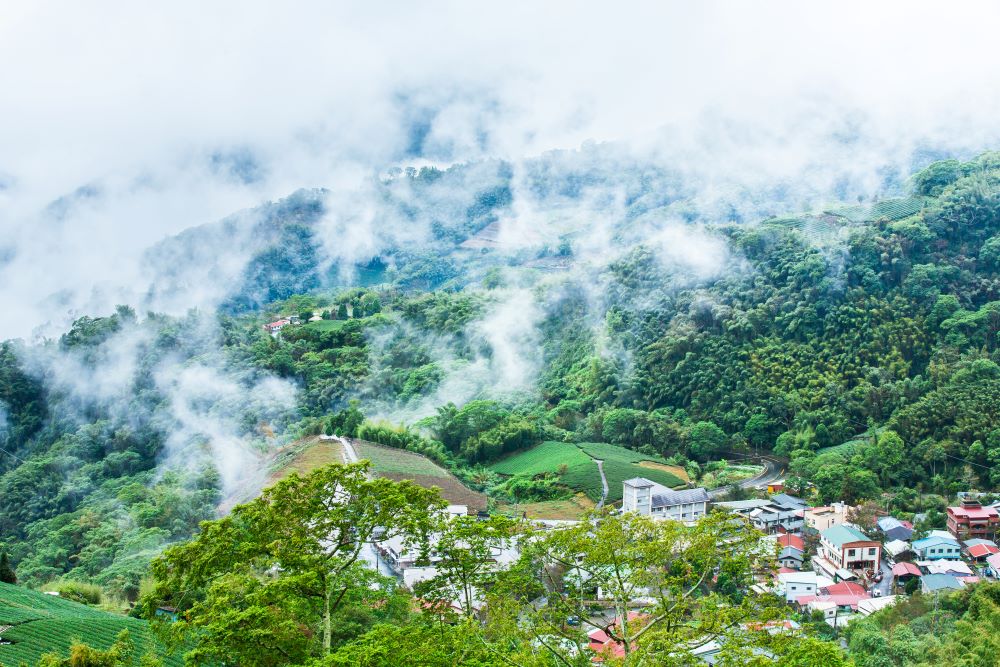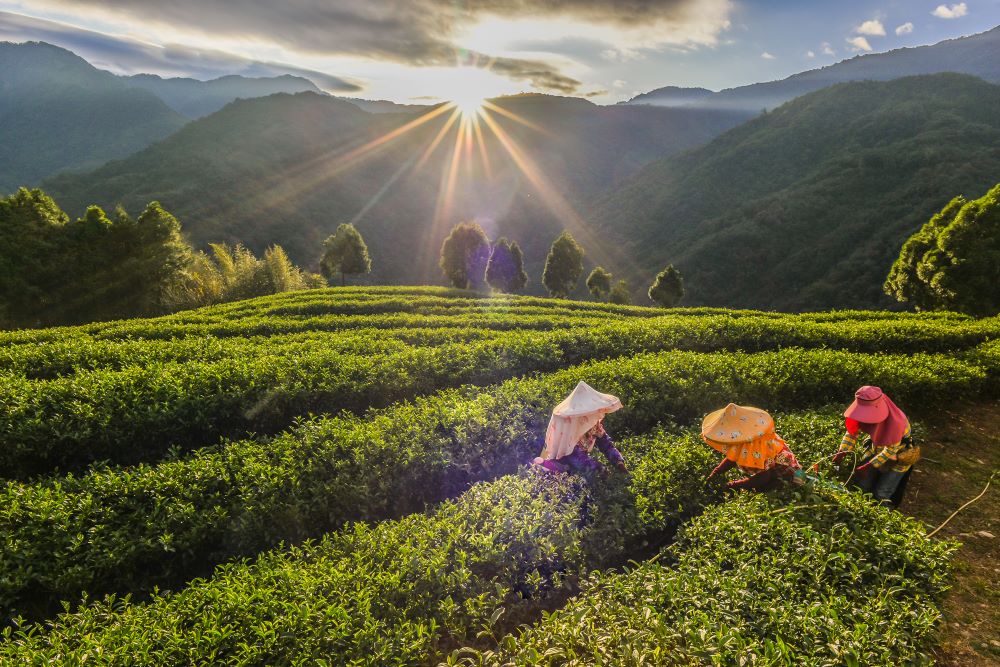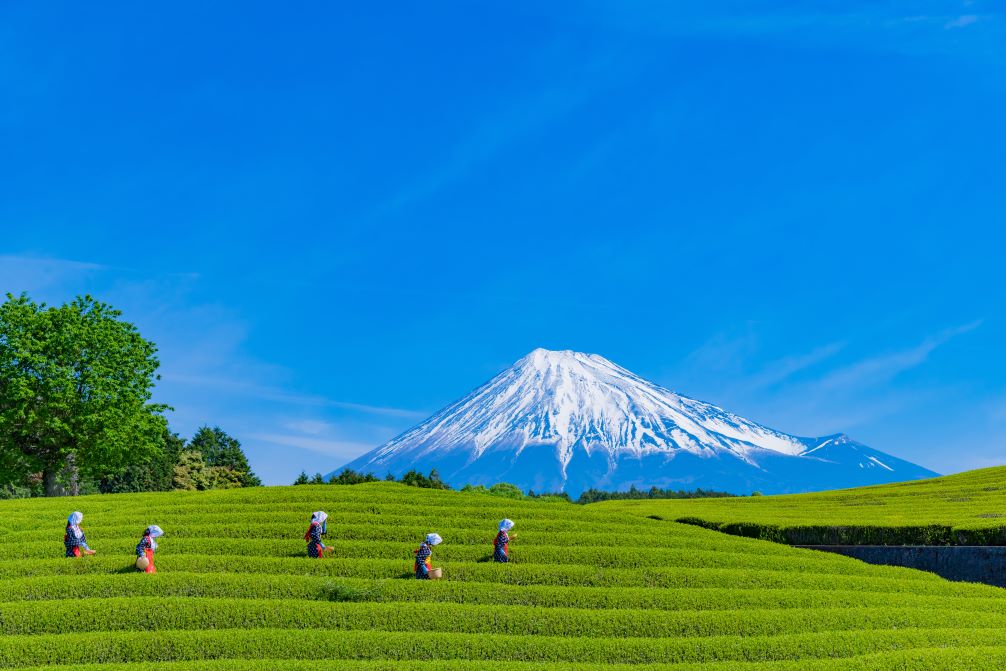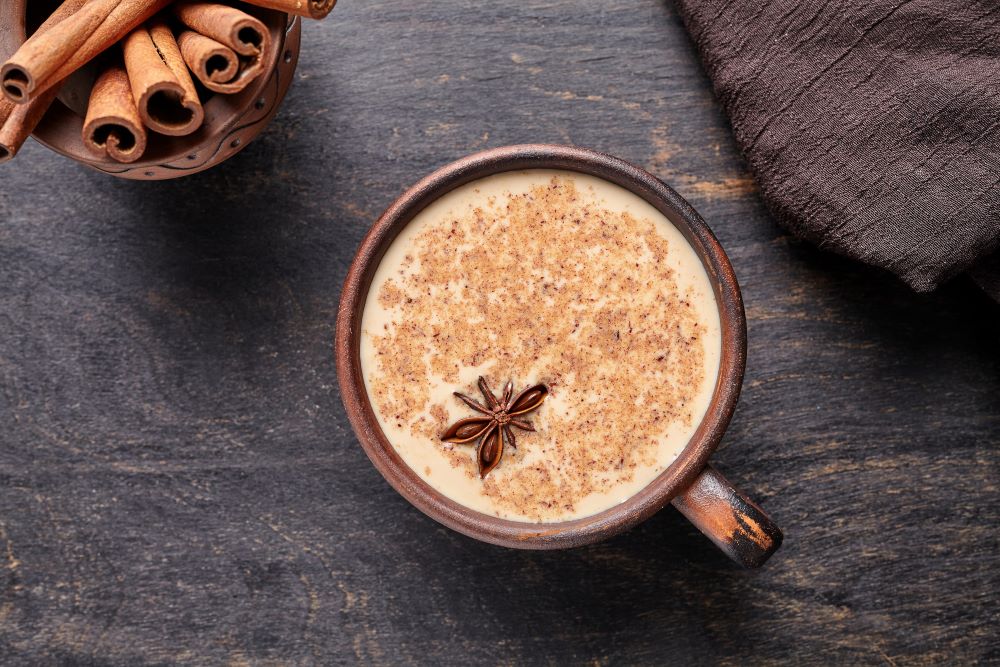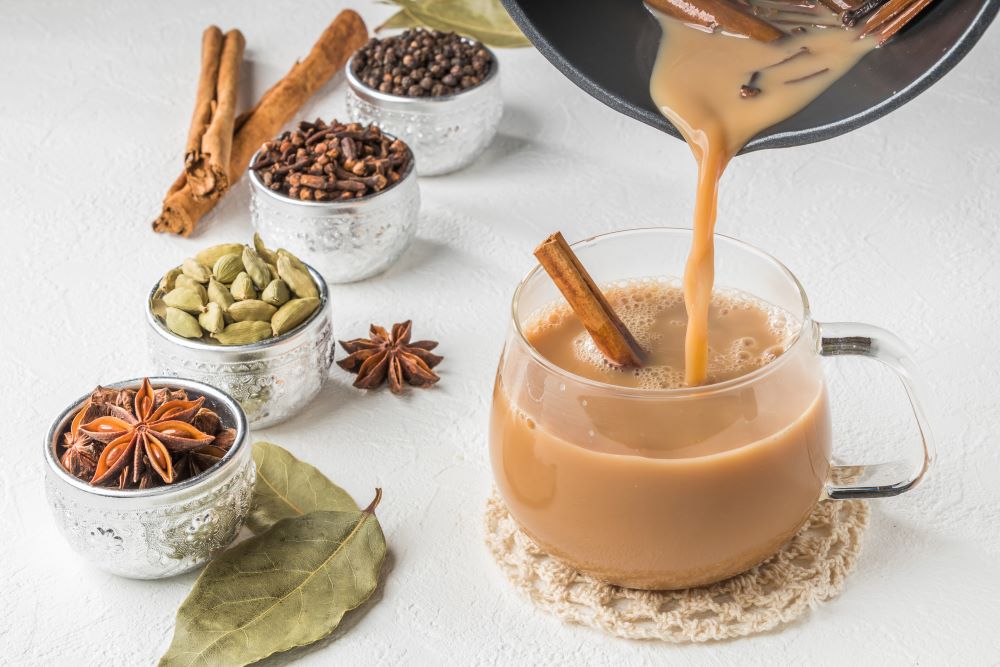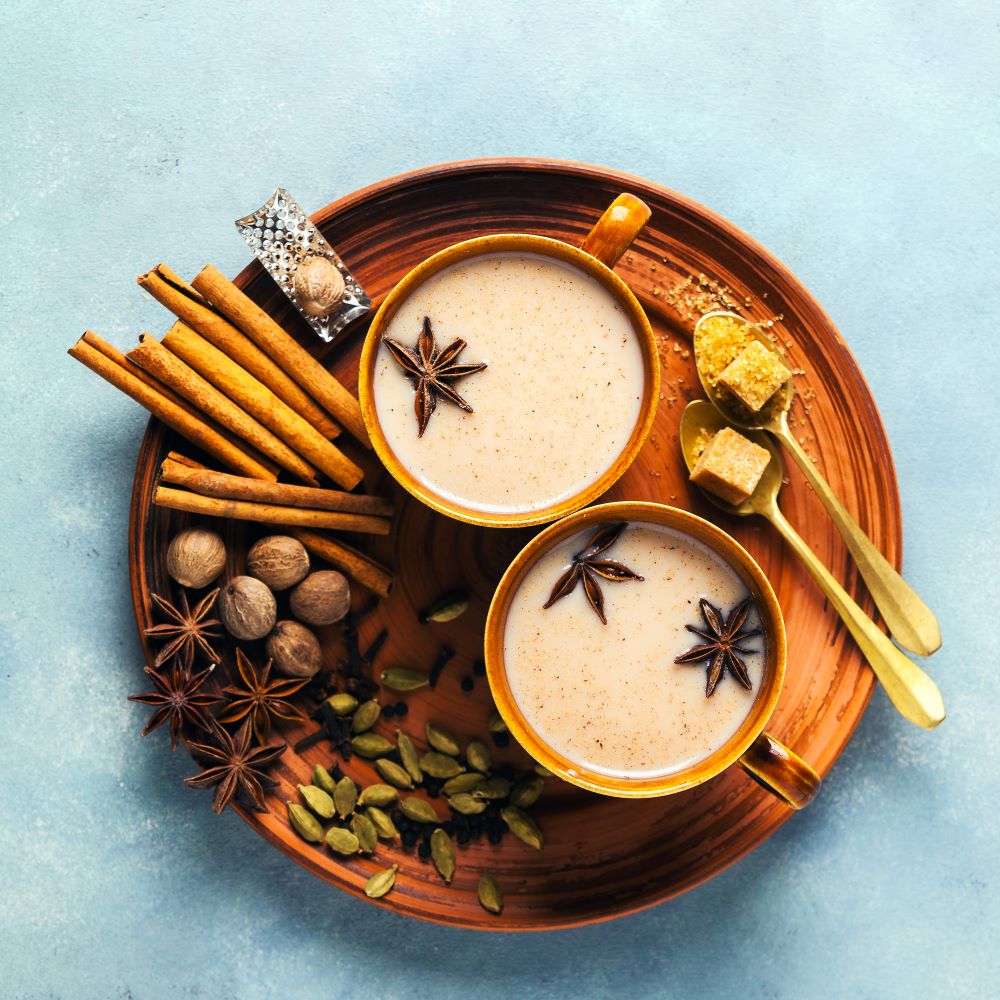There are more than 100,000 tea plantations employing millions of workers across India. Tea is so deeply rooted in Indian culture that 70% of the tea produced, is consumed by its own people.
The three main tea regions in India are Assam, Darjeeling and Nilgiri, each defined by its unique climate and geographical uniqueness. Both Assam and Darjeeling are located in the northeastern part of India. The Assam region is located in the rich, dense jungles at the foothills of the eastern Himalayas, while the Darjeeling region is close to the Tibetan Himalayas and stretches between high mountain ridges and deep mountain valleys. Nilgiri, however, is located in the mountains of the southernmost tea-growing region in India. The Nilgiri (Blue Hill) mountains have high altitude ridges that feature lush forests and jungles where tea thrives.
Each tea producing region in India is characterized by a different but perfect, for tea cultivation, climate.
ASSAM
STORY
Assam is the largest tea producing region in India. It is the home of the indigenous tea variety, Camellia Sinensis Assamica.
The discovery of this tea in 1815 was a wonderful opportunity for English trade in colonial India. Robert Bruce, an English explorer and botanist, is said to have confirmed the discovery of India’s native tea plant in 1823. His research, however, was taken over by his brother Charles when he died.
Bruce explored the wild Assam tea plants that grew throughout the region and learned that local tribes had been using tea for centuries as both food and drink. By the 1830s, Bruce understood how these plants could be propagated and grown systematically. And so began the British tea industry in India.
By the late 1870s, the English had invented machinery that helped speed up the tea-making process with less labour. In a short time, the British had the tea plantations and resources to increase per capita tea consumption in Great Britain from 1 pound per year in 1820 to more than 4 pounds in 1880.
GEOGRAPHY
Assam is a vast, tropical river valley. In the northern part of Assam, the Brahmaputra River descends into the centre of the region from Tibet and provides the water that sustains the tea plantations in the fertile plains. The southern part of Assam lies in a valley in the foothills of the Himalayas. The soil morphology and microclimate are ideal for tea cultivation.
Assam tea garden
Assam’s tropical weather, hot and humid with plenty of rainfall, feeds a robust tea bush known for producing dense and lush plants with large leaves. The resulting leaves produce a characteristically strong, full-bodied tea.
The harvesting and tea production season in Assam lasts from March to November. Assam tea leaves are generally harvested twice during a season; the harvests are known as ‘first flush’ and ‘second flush’. The first is harvested during the early spring harvest in March and produces the most delicate teas from Assam. The second harvest in mid-summer produces the teas that are considered the most distinctive Assam teas. These more mature leaves (more coppery in color and covered with fine hairs) make a creamy, full-bodied tea.
Because Assam is the largest tea growing region, it produces between 50%-75% of India’s total tea production.
DARJEELING
STORY
While the discovery of the native Assam tea bush was progressing, the British were also trying to smuggle China’s most valuable tea plants and seeds into India. There were many doubts about whether India’s native tea bush could compete with the high quality of tea coming from China.
The British eventually managed to smuggle in seeds and grow China’s tea (Camellia Sinensis Sinensis variety) in the high, cool and rainy mountains of Darjeeling.
By the mid-1850s, tea cultivation in Darjeeling was successful with both the Chinese and the native tea variety of India (and even a hybrid of both), so the British-led government continued to send resources to develop the tea industry in this part of India. While the region increased the area under tea cultivation and the quantity of tea produced, it never managed to match the tea production of Assam. Darjeeling has so far produced only 1% of India’s total tea production.
Darjeeling is often described as the ‘champagne’ of teas. Like the fickle grapes of France, Darjeeling tea harvests can vary from year to year depending on weather conditions, soil morphology and accessibility to the unique and varied mountainous terrain where the bushes grow. Like all protected origin products (PDOs), a tea must be grown, produced and processed in the tea gardens of the Darjeeling region of India to be called “Darjeeling”.
GEOGRAPHY
Darjeeling is located in the state of West Bengal in eastern India. The tea gardens of Darjeeling range in altitude from 2,000 feet to 7,000 feet and are spread across hills and valleys and wind through steep vertical mountain ranges and alpine forests. Because of the radical changes in altitude, there are many microclimates throughout Darjeeling, from cool winds to subtropical forest humidity and from intense sunshine to monsoon rains. The challenging geography and rugged, sometimes inaccessible, terrain are what make Darjeeling such a unique tea.
The terrain itself is said to determine the unique taste of Darjeeling tea. Teas grown at higher altitudes and in colder temperatures are said to be the most prized teas of the region. The Darjeeling bush is also more difficult to harvest, sometimes because of the changeable weather and sometimes because of the steep terrain where the plants are located. This is one of the reasons why the supply of Darjeeling tea will never meet the endless demand.
Darjeeling tea garden
Another reason Darjeeling tea is so valuable is that it is completely unique to this region of India. While some of Darjeeling’s tea gardens grow the native Indian variety of tea (assamica), most of the tea grown in this region is the Chinese variety (sinensis) which has acclimatized to the high altitude and special climate. In addition, many Darjeeling tea bushes may be a Chinese-Indian hybrid, which is found nowhere else in the world!
The China bush variety of Camellia sinensis sinensis grown in Darjeeling produces small, thin leaves compared to its cousin Camellia sinensis assamica from the bush of India, from which Assam tea is produced. It takes about twice the amount of China bush tea leaves for the same weight of India bush tea leaves, and this is another reason why Darjeeling produces such a small fraction of India’s annual tea production.
Because winter is severe throughout the Darjeeling region, the tea bushes lie dormant for many months of the year. Depending on the location of the tea garden, the harvest season runs from February to November, yielding several seasonal harvests along the way.
The period from February to mid-April, when the plants have awakened from their winter dormancy, produces a soft, brown-green leaf with floral aromas and a mild taste. It is the most famous period also known as Spring Flush.
The month of May gives us the “second flush”. The leaves are larger, more mature, with a purple hue and silver edges. These leaves are known for their full, musky and fruity flavor.
The “monsoon flush” from June to October brings large leaves that ferment into a more intense color and a bolder flavor. The reason it is referred to as “monsoon flush” is that this tea thrives in areas subject to monsoons and Darjeeling receives heavy rains from July to September.
The “autumn flush” occurs in October and November and gives a rich copper color that can be described as full and smooth in taste.
Regardless of the flush it comes from, each batch of fresh leaves will be different from one garden or season to the next. As a result, no Darjeeling batch will ever be the same.
NILGIRI
STORY
The same Chinese tea seeds that thrived in Darjeeling were sent to the Nilgiri Mountains (Blue Hill) of southern India in the state of Tamil for experimental planting. The geography at high altitude was like that of Darjeeling and thus proved to be a fertile area for tea cultivation.
While the size of the cultivation area and the number of tea holdings were like those of Darjeeling, Nilgiri tea itself never received the prestige or honor, claimed by teas from Assam and Darjeeling. Much of Nilgiris’s tea was destined for Eastern Europe and Russia, which were smaller tea-consuming countries compared to England and America. After 150 years, the quality of Nilgiri and its demand have experienced huge improvements. Nilgiri now accounts for 25% of India’s total tea production, about 50% of which is exported to the UK and Europe. In 2006, Nilgiri tea producers held their first tea buying action in the United States, which had great success and praise for the quality of tea grown in Nilgiri.
GEOGRAPHY
While the high altitude of Nilgiri is similar to that of Darjeeling, the terrain and climate are less extreme with more rain and tropical weather. It borders the Indian Ocean instead of the Himalayas, so the region is filled with lush forests, tropical jungles, cool misty valleys, sunny plateaus, and meadows fed by many streams and rivers.
The region is home to two national parks and four wildlife sanctuaries, which make up the Nilgiri Biosphere Reserve, the largest of its kind in India. Outside of parks and reserves, Nilgiri is mostly a plantation area.
Nilgiri tea gardens
More than 70% of the area is dedicated to tea gardens. Some of the most famous spices that grow in India can be also found here: cardamom, cinnamon, cloves, nutmeg, pepper and vanilla.
CHAI
Nilgiris’s monsoon seasons, with its distinct wet and dry periods, determine the tea cultivation and collection schedules. The tropical climate allows harvesting and production all year round, although the best Nilgiri teas are harvested between November and March. The China tea bush variety has adapted to its tropical environment and produces a sturdy shrub that produces abundant dark, lush leaves, which give tea its deep color and rich flavor. Tea is grown among cypress and eucalyptus trees, as well as spices, which affect the aromatic taste of tea. It is a high-yielding crop compared to that of Darjeeling. In addition, it is more reliable in taste and production performance than Darjeeling and Assam.
THE STORY OF CHAI
The name “chai” is the Indian word for “tea”, which comes from “cha”, the Chinese word for “tea”. The term chai means a mixture of spices soaked in a tea-like beverage. Recipes for tea vary across continents, cultures, cities and families. The traditional ingredients of a seasoned tea, however, usually include black tea mixed with strong spices such as cinnamon, cardamom, cloves, ginger, and black peppercorns. Seasoned tea is usually brewed strong, always with the addition of milk and sweetened with sugar or honey.
The origins of Chai date back 5,000 years, when a king in present-day India ordered a therapeutic seasoned drink to be created for use in Ayurveda, a traditional medical practice in which herbs and spices are used for healing. For the preparation of the therapeutic drink, various local spices were used, depending on the region of the continent or even the neighborhood where the drink was made. Interestingly enough, the original versions of “masala chai” or “tea spice” did not actually contain Camellia sinensis tea leaves.





